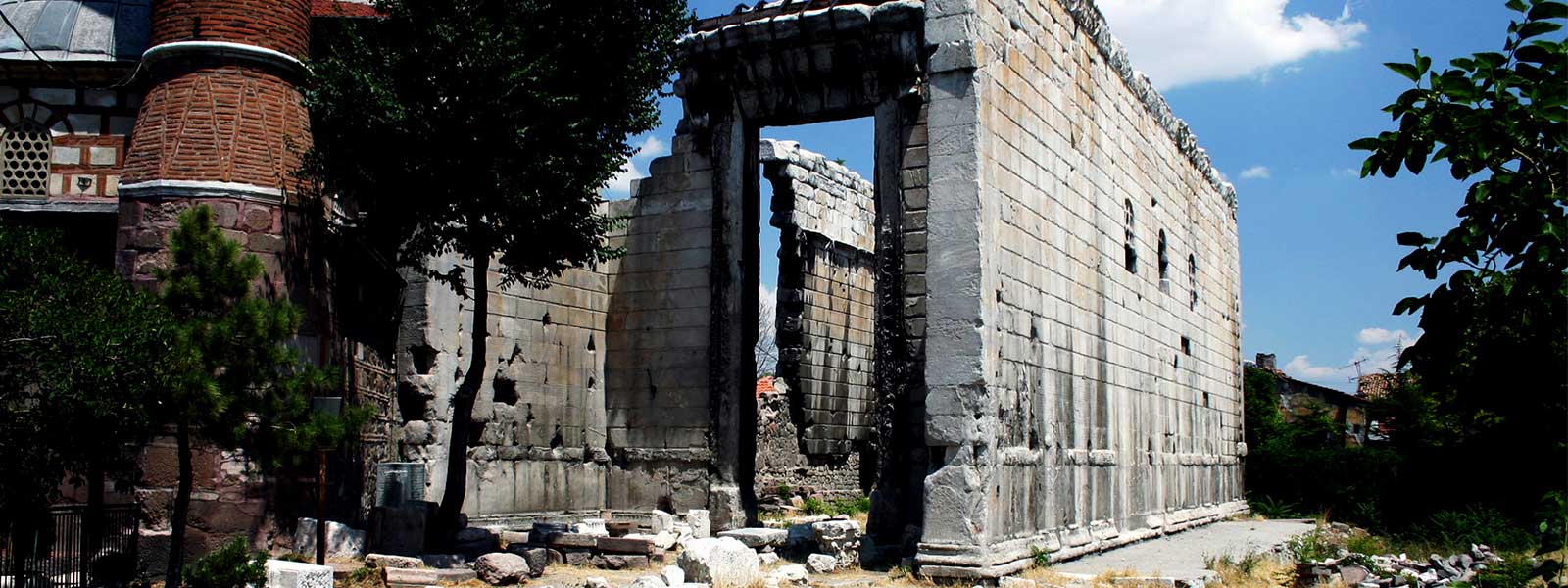
AUGUSTUS TEMPLE
The Augustus Temple, also known as the Monumentum Ancyranum, was built between 25 BC – 20 BC following the conquest of Central Anatolia by the Roman Empire and the formation of the Roman province of Galatia, with Ancyra (modern Ankara) as its administrative capital. After the death of Augustus in 14 AD, a copy of the text of Res Gestae Divi Augusti was inscribed on the interior of the pronaos in Latin, whereas a Greek translation is also present on an exterior wall of the cellar.
The Marble Temple measuring 36x54,82 meters used to stand on a pediment of several steps about 2 meter high. It is facing to the west planned in pseudodipteros with 8 ionic pillars on the short side and 15 on the long. Internal complexes (Naos) consisted of three parts with two Corinthian pillars at the pear section (Antea) and four more in the antea on the gateway (Pronaos).
The temple, on the ancient Acropolis of Ancyra, was enlarged by the Romans in the 2nd century. In the 5th century, it was converted into a church by the Byzantines.
This temple is of a great importance with the inscriptions referring to the deeds of Augustus. The inscriptions related to the same deeds written in Latin are found on Pisidia Antiochia in Yalvac while the Greek version was found on Phrygian Apollonian in Uluborlu. The inscriptions on this temple are the best preserved bilingual texts quoted from the ruler' speeches. The speeches delivered by Augustus himself are known as index rerum gestarum and have been inscribed bilingually; in Greek and Latin on the walls are known to be Monumentum Ankyranum the inscriptions in Latin appear on the internal surface of the Pronaos while the Greek versions take place on the southwest external surface of the Naos just after the disappearance of the rulet in the early Christian era, the temple has been changed into a basilica and three windows have been annexed on the south wall of the cella with a cryptos beyond the Naos. In ensuing years, when Ankara was conquered by the Seljuks in the 12th Century AD, the mosque called Haci Bayram was built nearby the northwest complex of the temple. The Cella, pronaos and the Temple have survived through the north-west wall of the Cella was destroyed in 1834.
The first systematical studies have been carried out by Ch. Texier, G. Perrot, M. Schede, D. Krencker and the complementary excavations were carried on by Dr. Hamit Z. Kosay in 1930.
